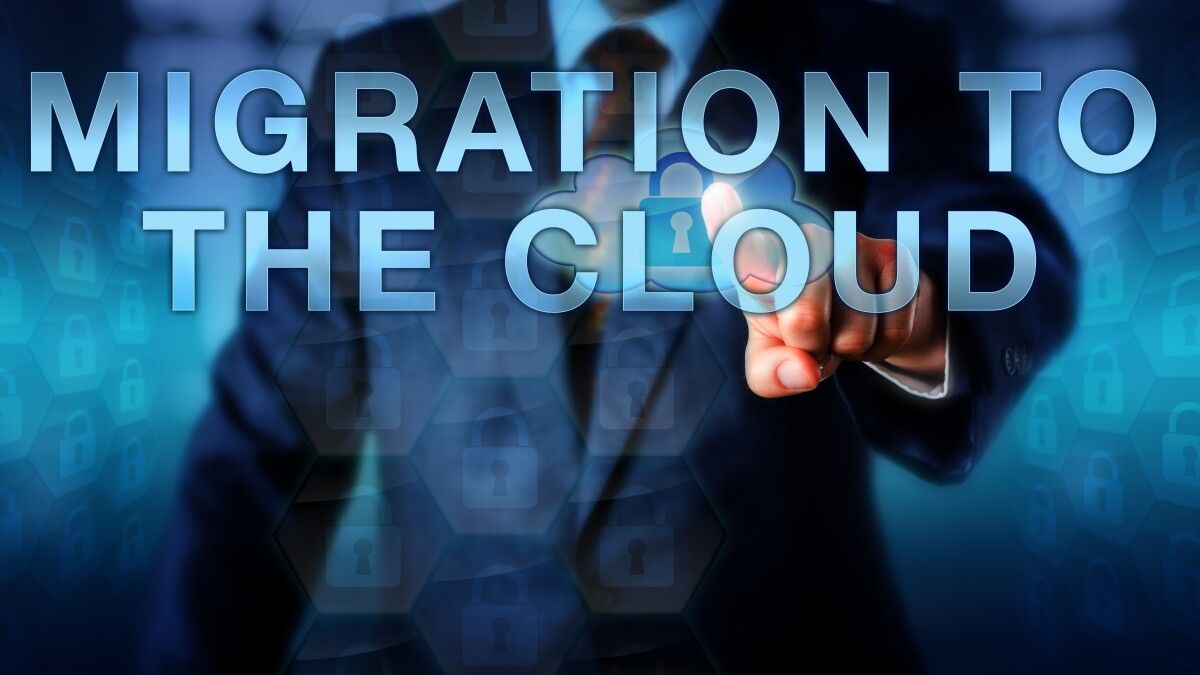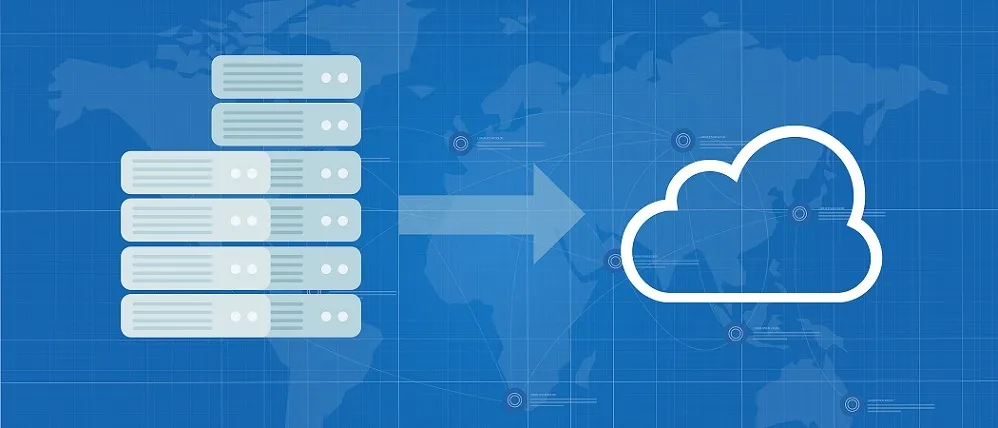Governance And Compliance In Cloud Migration
Governance And Compliance In Cloud Migration
Cloud migration is an increasingly popular concept for businesses and organizations. In fact, since 2019 the adoption rate of cloud services has increased by 17%. As a result, governance and compliance in cloud migration have become essential components to consider when making decisions regarding technology investments. This article will explore how organizations can approach these two concepts to ensure that their operations are secure and compliant with applicable regulations.
The primary purpose of this article is to understand why governance and compliance should be considered when migrating data to the cloud. To start, it is important to identify what each term means as they are often used interchangeably but refer to different elements of security management within an organization's IT infrastructure. Governance refers to the set of processes, rules, principles and policies established by decision-makers that define acceptable behavior within an organization while compliance indicates adherence or conformance to those standards set forth by governing bodies such as industry regulations or other laws.
This article will discuss how organizations can apply risk assessment techniques and develop strategies for maintaining both governance and compliance throughout their transition process into the cloud environment. It will also provide best practices and resources that readers can use to help them effectively manage their own migrations securely while staying up-to-date on any changes in regulatory requirements.

What Is Cloud Migration?
Cloud migration is the process of migrating an organization’s applications, data and infrastructure to a cloud service provider. This move can bring cost savings, flexibility, scalability and automated maintenance for organizations that make the transition. The decision to migrate should be based upon careful consideration of the business requirements of each individual organization.
Governance and compliance are important considerations when it comes to cloud migration. Organizations must ensure all incoming platforms comply with their existing standards as well as any relevant industry regulations or laws in order to maintain trust with customers, partners and other stakeholders. Additionally, they need to have policies in place regarding access control and data protection within the new platform environment. They also need to consider how best to audit activities on the system regularly so that changes can be tracked effectively over time.
Organizations may choose either public, private or hybrid clouds depending on their needs; however all three models come with various levels of security risk associated with them which require appropriate governance measures such as authentication protocols, encryption techniques and auditing processes. Furthermore, there are certain elements required by specific industries such as healthcare and finance where additional layers of regulatory compliance may be needed before a successful migration can take place. Taking into account these factors during planning will help organizations remain compliant throughout their journey from legacy systems to modern cloud-based solutions.
Benefits Of Cloud Migration
The transition to cloud computing is an exciting prospect, enabling users to access high-performance applications and services with unprecedented speed. But these advantages come with their own set of challenges: how do organizations ensure that the move to the cloud maintains compliance and governance standards?
Moving to the cloud offers numerous benefits, including improved scalability, cost savings, increased agility and reliability, as well as enhanced security. Organizations can take advantage of these features while still adhering to safety protocols. By utilizing a multitude of tools and strategies, companies are able to migrate data securely while meeting regulatory requirements in the process.
Cloud migration presents an opportunity for businesses of all sizes to optimize their operations and keep up with ever-evolving technology trends. With careful attention paid towards ensuring appropriate levels of governance and compliance throughout the entire process, firms can benefit from greater efficiency without compromising safety or putting themselves at risk of noncompliance penalties.
Challenges With Governance And Compliance In Cloud Migration
The idea of cloud migration, which entails the transfer of existing applications and services from an on-premises or traditional computing environment to a virtualized one, has been gaining traction in recent years. While cloud migration offers many benefits such as cost savings, scalability, and increased efficiency, it also brings with it certain challenges related to governance and compliance. This paper will investigate the various challenges associated with governance and compliance when performing cloud migrations.
Organizations migrating to the cloud must be aware that their data could potentially exist across multiple locations around the world. As such, they need to ensure that appropriate measures are taken to protect this data while still complying with local laws and regulations. An organization may have different legal obligations depending on where its data is stored or processed; thus, they must take into account any regional nuances when designing policies for their cloud operations. Additionally, organizations should consider how changes in technology might affect their ability to meet regulatory requirements over time.
Many organizations struggle with finding suitable tools or processes to maintain visibility into their cloud environments so as to effectively enforce security standards and comply with applicable regulations. Misconfigurations can lead to significant breaches of privacy or expose confidential information if not monitored correctly; therefore, businesses need a plan for regularly auditing their systems in order to identify issues before they become a problem. Furthermore, there is often difficulty in providing sufficient training for personnel responsible for managing these resources since new technologies are constantly emerging that require specialized knowledge and skillsets.
In summary, achieving effective governance and compliance during a cloud migration requires careful planning ahead of time in order to address potential risks posed by changes in technology or regional differences in legal obligations. Organizations must make use of available tools and processes that allow them to adequately monitor activities within their environment while ensuring adequate training is provided so staff members are well equipped to handle tasks associated with maintaining security standards and meeting regulatory requirements over time.
Regulatory Requirements For Cloud Migration
When it comes to cloud migration, the issue of governance and compliance is a critical factor. Organizations need to ensure that all regulatory requirements are met with their migrated systems in order for them to remain compliant. In this section, we will examine some of these regulations more closely.
First, organizations must consider laws pertaining to data privacy when they migrate their operations into the cloud. Depending on where the organization’s customers are located - as well as any applicable industry or regional standards that may exist - there could be specific rules which must be adhered to concerning how customer data is gathered and stored. These legal considerations can have an impact on the design of a company’s cloud system architecture, making it important for organizations to analyze the relevant laws before they begin their migrations.
Next, companies should also take steps to protect intellectual property (IP) when migrating into the cloud. IP rights apply both domestically and internationally and vary from country-to-country; thus organizations should pay close attention to local and global legislation regarding digital assets such as software code or other proprietary information which may stored in the cloud environment. Additionally, third party agreements related to access control measures should be established by organizations so as to limit unauthorized sharing or use of sensitive material during cloud migrations.
In sum, businesses must carefully consider various regulatory demands when planning for a cloud migration project in order for them comply with existing laws governing data privacy and intellectual property protection. Failing to do so puts companies at risk of facing potential fines or reputational damage if found noncompliant due to insufficient precautions taken while moving operations into the cloud space.
Security And Privacy Considerations
When migrating to the cloud, security and privacy considerations must be taken into account. Organizations need to ensure that data stored in the cloud is secure from unauthorized access or manipulation. They also have to take into account applicable laws, regulations, and ethical standards regarding personal information protection.
Organizations should consider encrypting all sensitive data before uploading it to the cloud, as well as implementing an identity and access management solution for user authentication and authorization. Additionally, they should select a reliable cloud service provider with strong security measures such as advanced firewalls and intrusion detection systems. Cloud providers often offer additional features such as encryption of stored data, monitoring services for potential threats, anti-malware solutions, etc., which organizations can use to further safeguard their data while ensuring compliance with regulatory requirements.
It is essential that organizations review any contractual agreements associated with the selected cloud service carefully so they are aware of how their data will be used by the provider. Furthermore, they should ensure that proper processes are put in place for ongoing maintenance and monitoring of their cloud environment to identify any issues related to security or privacy violations promptly.
Data Management Strategies
Studies reveal that nearly three-quarters of enterprises have either already migrated to the cloud or are in the process of doing so. This makes data management strategies when migrating to the cloud a critical consideration for organizations looking to remain compliant with regulations and ensure secure operations.
When it comes to managing data, there are several points organizations must consider when planning their cloud migration strategy. The first is mapping out existing sources of data within the organization and determining which pieces will be moved to the cloud. Once this is complete, policies surrounding access control should be established along with protocols for data retention and archiving. Additionally, business continuity plans need to be put into place as part of any organized approach to data management during cloud migration.
Organizations also need to pay close attention to other considerations such as encryption standards and audit trails associated with user activity on sensitive information stored in the cloud environment. Such measures can help protect against malicious actors attempting unauthorized access or misuse of company assets. Furthermore, rules governing how customer personal data should be handled across multiple jurisdictions must conform with applicable legal requirements – something many companies forget about despite its importance when dealing with cross-border transactions.
In order for successful cloud migration projects, these considerations must all taken into account from early stages of planning through implementation and ongoing maintenance cycles. By accounting for them up front, businesses can maximize compliance levels while ensuring security objectives are met at every step throughout their journey towards digital transformation.
Infrastructure Considerations
Migrating to the cloud is a complex endeavor, one which requires thoughtful consideration of infrastructure. Infrastructure considerations can be broken down into three distinct components: security, storage and networking.
Security is essential in any cloud migration project as it ensures that data is kept safe from unauthorized access or malicious actors. Cloud providers should have robust security policies with features such as encryption at rest and transport layer security (TLS). They also need to provide authentication mechanisms for users accessing their services, including multi-factor authentication if possible. Additionally, organizations must assess how they will monitor their cloud environment for threats and respond accordingly when needed.
Storage solutions are necessary for storing both structured and unstructured data on the cloud platform. Organizations should consider factors such as latency, scalability and cost before selecting an appropriate solution for their needs. For example, some organizations may opt for object storage services while others might prefer block storage options like Amazon Elastic Block Store (EBS). It’s important to select a service that not only meets current requirements but can scale up easily as well.
Networking capabilities are essential for ensuring smooth communication between different parts of the system. Companies should look into network performance metrics such as throughput, latency and packet loss before deciding on a particular provider's offering. The right choice of technology can help reduce bandwidth costs while still providing reliable connectivity among all systems involved in the migration process. Furthermore, businesses should make sure that their chosen vendor supports technologies like software defined networks (SDN) so they can quickly configure connections between applications running on various regions or availability zones within the same cloud environment.
In order to ensure successful implementation of governance and compliance during cloud migration projects, infrastructure considerations must be made carefully. Security protocols must be implemented correctly along with appropriate storage solutions and efficient networking capabilities in order to create an effective system architecture that meets all regulatory standards without compromising reliability or performance levels
Automation Of Governance And Compliance
The seventh step in cloud migration is Infrastructure Considerations, while the eighth and final step involves Automation of Governance and Compliance. As organizations move to the cloud, it is important that they also ensure their governance procedures are automated with appropriate compliance protocols in place. This process requires a holistic understanding of the organization’s infrastructure and its associated risks.
Automating governance processes not only makes them easier to manage but also helps ensure consistency across various functions within an organization. Additionally, automation can help streamline audit trails for better organizational record keeping, as well as provide cost savings by reducing manual labor costs associated with managing these activities. To achieve successful automation of governance and compliance protocols, organizations should consider leveraging existing tools like Cloud Security Alliance (CSA) or Amazon Web Services (AWS), which offer solutions specifically tailored for this purpose.
Moreover, a comprehensive strategy must be developed around risk management, data protection and privacy policies before any form of automation is implemented on an organizational level. Organizations must take into account industry standards when establishing such policies in order to remain compliant with applicable regulations. By implementing effective governance systems through automated means, organizations can mitigate potential issues along with ensuring their operations adhere to external regulatory requirements – resulting in improved efficiency of overall business activities.
Role Of Compliance Officer
The role of compliance officer is an important one in cloud migration that requires a comprehensive understanding of the technology and business environment. A compliance officer is responsible for ensuring that governance policies are implemented effectively throughout the process, while also adhering to industry standards and regulations. This includes assessing risks associated with data privacy, security, and other related topics, as well as monitoring progress towards meeting these requirements.
In addition to risk management duties, the compliance officer must also ensure that all stakeholders understand their responsibilities when it comes to protecting sensitive customer information. Furthermore, they should be able to provide guidance on how best to implement controls for managing risk within the organization. The compliance officer must remain up-to-date on changes in laws or regulations which could impact their ability to protect customer data during cloud migration efforts.
Due to the complexity of this role, organizations may consider engaging an external consultant or vendor who specializes in compliance services. These experts can provide valuable insight into potential pitfalls and offer solutions tailored specifically for each organization's unique needs and challenges. Through collaboration between internal personnel and outside expertise, companies can mitigate risks associated with migrating data securely to the cloud while still complying with relevant laws and regulations.
Best Practices For Compliance And Governance In Cloud Migration
Cloud migration is a shift from traditional computing to cloud-based services. It has become increasingly important for organizations today due to the numerous advantages provided by this modern technology. Compliance and governance are two key aspects of managing such migrations, ensuring that all operations meet industry standards and regulations while also controlling risks associated with the process. This article seeks to provide an overview best practices for compliance and governance in cloud migration.
Firstly, it is essential to have a clear understanding of applicable laws, regulations, policies and other requirements related to data security, privacy protection and consumer rights. These should be carefully evaluated according to each organization’s specific situation in order to identify potential areas of risk or non-compliance before initiating the migration process. Additionally, companies must ensure that appropriate documents outlining these rules are signed off on by both parties (the company itself as well as any third party service providers).
Organizations need to ensure that their existing infrastructure meets basic security requirements before engaging in cloud migration. Such measures may include implementing strong encryption protocols; conducting regular system audits; developing technical controls like firewalls; installing anti-virus solutions; regularly monitoring systems; and consistently updating software programs. The adoption of DevOps principles can further help organizations initiate rapid response strategies when faced with unexpected issues or threats during the transition period.
Proper training needs to be given to staff members who will be involved in the cloud migration journey so they can understand how various processes work together within the new environment along with identifying any potential risks or complications which might arise later on down the road. Furthermore, having a dedicated compliance officer oversee all activities ensures there is always someone responsible for upholding good governance practices throughout the entire project lifecycle.
How Cloud Migration Can Reduce Costs For An Organization
Cloud migration has become increasingly popular for organizations seeking to reduce costs and increase efficiency. However, the process of moving from a traditional on-premise infrastructure to a cloud environment can present unique challenges in terms of governance and compliance. It is essential for businesses to ensure that their cloud migration initiatives remain compliant with existing regulatory requirements while also prioritizing security and privacy considerations. To achieve this, they must develop an effective strategy comprising automation of governance and compliance processes, assurance by a qualified compliance officer, as well as best practices tailored to their specific needs. Ultimately, investing time upfront in developing such a plan will save money down the line when ensuring adherence to regulations. As the old adage goes: “a stitch in time saves nine”; taking proactive steps now towards meeting compliance standards pays dividends later on.
Let Us Help You!
Sign up to our newsletter











